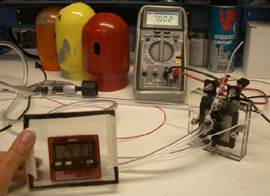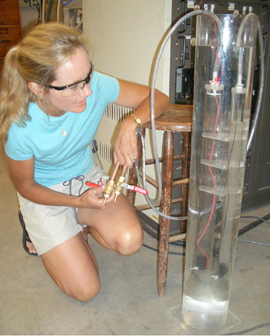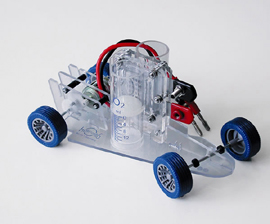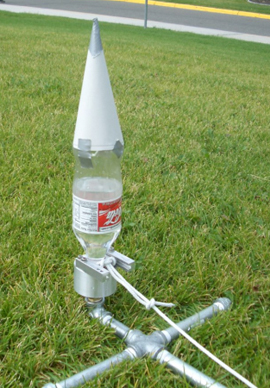Suzie Flentie
Description Of RET Experience:
-
Areas of study - Methods of thin film deposition and analysis, fuel cells, electrolysis, and rocketry
- I had the opportunity to learn a lot about the thin film research at Montana State University. Nanotechnology is playing an important role in the development of new materials to be used in a variety of technologies; fuel cells in particular. I set out to discover a variety of techniques for developing and analyzing thin films using state of the art equipment in the labs at MSU.
- Examples of thin film deposition: MOCVD (Metal Organic Chemical Vapor Deposition) and MBE (Molecular Beam Epitaxy), used for poly-crystalline and single crystal film deposition; thermal evaporator used to evaporate thin films onto a given substrate; sputter coating used to condense atoms on the surface of the specimen to be coated
- Examples of thin film analysis: XPS (X-Ray Photoemission Spectroscopy), Rutherford backscattering, PPMS (Physical Properties Measurement System)
As I participated in these activities, I discovered many real world applications of basic concepts taught in the 8th grade Physical Science curriculum so I will be able to share these examples and experiences with my students.
-
I also had the opportunity to experiment with a polymer electrolyte fuel cell. It is dismantle able so that my students will be able to see the inside structure; cathode, anode and polymer electrolyte membrane. By attaching a bubbler for moisture, pumping in hydrogen and oxygen, attaching a voltage meter, mini fan and humidity indicator, the students will be able to observe a fully functional fuel cell.

-
I also developed a lab for students to perform an electrolysis experiment splitting water molecules into hydrogen and oxygen. One of the graduate students in our lab, built me a very innovative electrolysis device for demonstration purposes that can produce large quantities of hydrogen and oxygen.

-
After students see how hydrogen and oxygen are used to operate a fuel cell with water as a byproduct and water is then split into hydrogen and oxygen, they will be well equipped to understand a fuel cell car. Our demo car uses electrolysis and a fuel cell to operate on water alone.

-
I also had the opportunity to develop a rocketry unit for my classroom. The graduate student previously mentioned built me a rocket launcher for 2-liter bottle rockets. Students will experiment with rocket designs to optimize maximum altitude based on Newton’s laws of motion.

This experience was a phenomenal opportunity for me to do real scientific research in a professional atmosphere with knowledgeable physicists. It also provided me with a multitude of hands on experiences to enrich my 8th grade curriculum.
